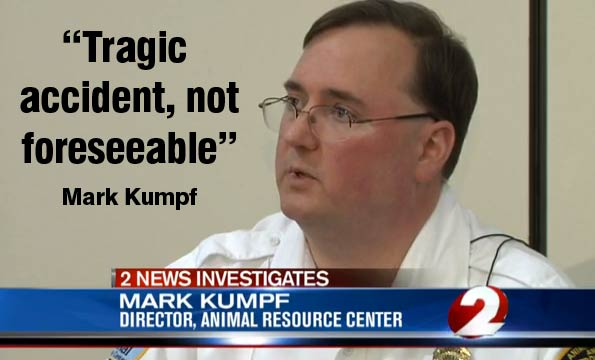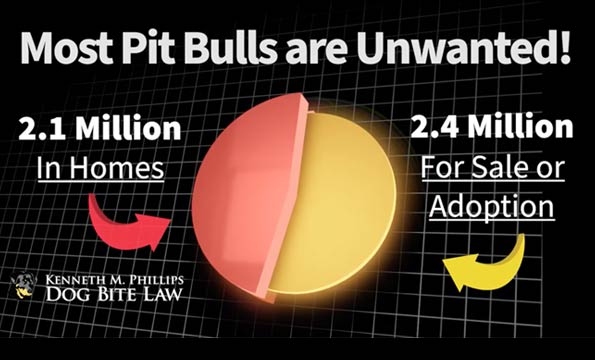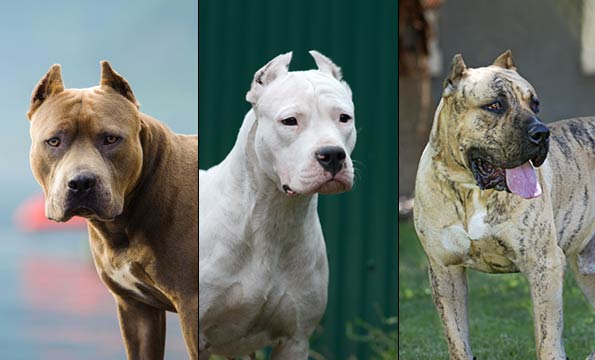$3.5 Million Settlement Expected to be Approved

On February 7, 2014 Klonda Richey was killed by her neighbor's two dogs in Dayton.
Settlement Reached
Dayton, OH - Six years after 57-year old Klonda Richey was mauled to death by her neighbor's two mastiff-mixes, and five years after her estate sued Montgomery County and Mark Kumpf, the former Dog Warden, a $3.5 million settlement is expected to be approved by the county. A commission vote Tuesday will avoid a jury trial. We were first alerted to this potential settlement back in January, when parties said at that time, "they have reached an agreement in principle."
The chronology of events leading up to her death and the basis of the lawsuit (Kumpf's recklessness and/or willful failure to act) are best spelled out in the Fourth Amended Complaint filed by Klonda's estate in December 2018. The Plaintiff's List of Trial Exhibits filed by attorneys last September shows the evidence that was expected to be presented to a jury. Also, a 2016 episode of Fear Thy Neighbor, titled "Hell Hounds," provides a dramatized version of events.
Since 2015, when Klonda's estate filed the lawsuit, there have been two major turning points in the legal case. The 2016 ruling from the Second District Ohio Court of Appeals, which allowed the case to proceed against Kumpf and Montgomery County (Schneider v. Kumpf, 2016, Ohio), and the August 2018 revelation that Kumpf and his department had destroyed key evidence. Also at that time, defense claimed that Klonda had "teased or tormented" the dogs that killed her.
Fourth Amended Complaint Introduction
1. This case seeks justice for Klonda Richey, who was killed on February 7, 2014 by dangerous dogs owned by her neighbors. For many months, Klonda complained to Defendant Mark Kumpf that the dogs were an imminent threat to her safety.
2. Plaintiff herein contends that Defendant Mark Kumpf's reckless and/or willful decision to take no action on any of her numerous complaints and reckless and/or willful disregard for his statutory duties subject him to liability therefore. Plaintiff further contends that Defendant Mark Kumpf and/or Defendant Board of County Commissioners of Montgomery County, Ohio, by and through the Montgomery County Animal Resource Center, willfully and with malicious purpose destroyed highly relevant public records with the intent to disrupt Plaintiff's existing lawsuit against Defendant Mark Kumpf. Plaintiff also contends that Defendant Board of County Commissioners of Montgomery County, Ohio, by and through the Montgomery County Animal Resource Center, is liable pursuant to ORC § 149.351(B)(2) because Plaintiff has been aggrieved by the destruction of public records in violation of ORC § 149.38 (C)(3).
On February 7, 2014, Klonda was found naked and ravaged to death in front of her home by a passerby. It was a grisly scene. Prior to the mauling, Klonda had filed 13 complaints with Montgomery County Animal Resource Center (ARC) and made 46 calls to Montgomery County Regional Dispatch Center related to her neighbor's dogs. Klonda had also installed security cameras and a tall two-tiered wooden fence to protect herself and her cats from these dogs.
That was not all either. About 16 months before her death, Richey filed a civil stalking protection order against the owner of the two dogs, Andrew Nason. The order was denied by Montgomery County Magistrate Kristi Wuebben in February 2013. Richey appealed the decision. Judge Michael Krumholtz denied her appeal the following month. At the time of her death, Klonda was an employee of the Montgomery County Job & Family Services Division and had been for 25 years.
Kumpf was quick to claim Klonda's horrific death was a "tragic accident" and that there was "nothing foreseeable or doable" to prevent this type of occurrence, despite his failure to act upon his statutory duties after her numerous complaints. One week after Klonda was killed by the dogs, Kumpf even orchestrated a "PR" video with her grieving sister and brother to show how noble his department was by caring for Klonda's many cats -- the video outraged victims' advocates.
Kumf also claimed, "none of these cats are facing euthanasia." Despite his public comments, several of Klonda's cats were euthanized by ARC.
Seen in the video are Klonda's siblings, Ted Richey and Linda Roach, who will now divide over $2 million of the settlement. The remaining $1.5 million goes to the counsel of record for over five years for attorneys' fees and filings, including their winning argument to the Second District Ohio Court of Appeals. The appellate court's decision not only allowed Klonda's case to proceed against Kumpf and Montgomery County, it clarified dog bite liability elements within Ohio law.1
Part of the settlement includes damages for the pain and suffering that Klonda endured before she died. "The evidence is clear that Ms. Richey experienced prolonged conscious pain and suffering prior to her death," said Chris Jenkins, an attorney representing her estate. Montgomery County Coroner Kent Harshbarger ruled her cause of death as blood loss due to extensive soft tissue trauma. Harshbarger described her injuries as "one of the worst that we've ever seen."
"Coroner Harshbarger further states that her injuries 'clearly happened while she was still alive,' and that the fatal attack occurred over 'a significant a [sic] period of time that she was aware and cognizant of what was happening.' - Fourth Amended Complaint
Harshbarger also stated there was no way to determine how many times the dogs had bitten Klonda. "We can’t quantify it because they overlap," Harshbarger said. "There’s no way to put a range on it." Plaintiff's intended to show the jury 159 photographs taken during the post-mortem examination of her body; 404 photographs taken at the crime scene on February 7, another 18 photographs taken on February 8, and drawings of the attack scene done by Dayton Police.
"Money Pit" Employee
For entirely separate reasons, Kumpf was fired by the county in December 2018. Under his leadership in Montgomery County, four people were mauled to death by dogs between 2012 and 2017 and multiple lawsuits were filed against Kumpf and the county. Despite all of the pending ligation, Kumpf was hired by Detroit last fall to lead their struggling animal control division in Wayne County, a county that has undergone 10 fatal dog maulings since 2005. Maybe a good fit?
Finally, how much money are Montgomery County taxpayers on the hook for in the settlement with Klonda's estate? Only a $500,000 deductible. Insurance pays the rest. However, the county shelled out at least $325,000 for outside council to defend Kumpf and the county in the case. The county also had to pay outside council $40,000 to settle an employment dispute with Kumpf after the county fired him. The pending lawsuit involves the missing body of a dog named "Dyson."
Unforgettable Letter
Prior to the dogs killing Klonda, she had written a letter to Nason asking him to sell his home to her. The letter states in part, "You paid 8k. I'll pay $3900 cash -- don't really want the house, but do want the trauma to my cats and fear to end."2 Nason never agreed to her offer. In the weeks following her death, just after Nason and Custer hurriedly moved out of the home, the property at 35 East Bruce Avenue caught fire under suspicious circumstances. It was later ruled arson.
I have 24 years of my life and memories here before the deaths of my Dad, Mother, husband. I am not leaving.
You have little time here with no emotional attachment. House is a trainwreck; no idea why you chose it when so many better ones are on the market w/few minor repairs necessary.
You paid 8k. I'll pay $3900 cash -- don't really want the house, but do want the trauma to my cats and fear to end. (They only go to that house because empty so long).
If you want to hurt me, shoot or stab me. Leave cats in peace. - Klonda Richey
Andrew Nason and Julie Custer, the owners of the dogs, each eventually pleaded no contest to a pair of misdemeanors. The two were sentenced from 90 to 150 days in jail and hundreds of hours of community service. A year earlier, a grand jury failed to return an indictment on felony charges. In April 2017, in unrelated charges, Nason was found guilty of felony assault for causing severe head injuries to his girlfriend's daughter in 2012. He was sentenced to five years in prison.
While serving out his five-year sentence at London Correctional, Dayton Daily News reported that Nason had participated in "hundreds of hours in the Pets Uniting People Program (PUPP)." A flyer about the prison program said it was a two-year apprentice program that offers a certificate from the Ohio Department of Labor that certifies the graduate as a journeyman animal trainer. So after Nason gets out of prison, he can continue raising and training vicious dogs and get paid for it.3
Summary
The county settling this case is not an admission of guilt. It simply means the county could have faced a higher judgment had a jury determined the case. The downside of reaching a settlement is that the case is never heard before a judge or jury. A court cannot find for the plaintiff and the case cannot create precedent or affect public policy. At least in this case, the appellate ruling clarified that a Dog Warden in Ohio can be the subject of a wrongful death lawsuit after a fatal mauling.
We reached out to dog bite attorney Kenneth Phillips to learn more about the implications of the settlement. Overall, he believes the multimillion dollar settlement will have a "positive effect because it publicizes the fact that dedicated lawyers have made animal control authorities pay for their negligence" and that "compensation paid to the victims can be substantial." This payout is three times higher than what Los Angeles County approved after the death of Pamela Devitt.
"The $3.5 million settlement will have a positive effect because it publicizes the fact that dedicated lawyers have made animal control authorities pay for their negligence, that the compensation paid to the victims can be substantial, and that the public servants who are responsible for enforcing our animal control laws had better get the job done right or else they and their departments will justly suffer the consequences." - Attorney Kenneth Phillips, DogBiteLaw.com
Klonda never had any justice in the years leading up to her preventable death or during the six years that followed. This settlement is the very first time Klonda has "ever" received any justice, aside from the fact that this justice will not include a court victory for her. The price she paid for this justice was her life. Klonda died alone in freezing snow while two mastiff-type dogs ripped her apart. She died screaming beneath Nason's window, who claimed he never heard a sound.
All of these years later, it is still painful to watch the "PR" video arranged by Kumpf and the Montgomery County Animal Resource Center after her death. Klonda's sister and brother, who were still traumatized and in shock after her brutal death, had no idea they were being exploited by the county so that Kumpf & Company could appear as "heroes" for Klonda's cats, having no responsibility in her brutal death.4 We hope Klonda's siblings now finally have some closure.
While browsing Google Street view, we discovered that Nason's former home at 35 East Bruce Avenue is now gone. All that remains is an empty lot of grass that looks freshly mowed. A solemn reminder of all that Klonda had ever hoped for -- freedom from Nason's two vicious dogs.

Three days after her mauling death, Mark Kumpf claimed her death was "not foreseeable."

In 2019, an empty lot is seen at 35 East Bruce Ave., where Nason's vicious dogs once lived.
Related articles:
03/08/25: How Ohio's Dangerous Dog Laws Fail Victims Who Are Attacked and Maimed
01/15/20: 2020 Dog Bite Fatality: Family Pit Bull Kills 4-Month Old Baby Girl in Dayton, Ohio
09/11/14: 2014 Dog Bite Fatality: Pit Bull Type Dogs Attack, Strip Naked and Kill Dayton Woman
Related documents:
09/10/19: Plaintiff's List of Trial Exhibits (Schneider v. Kumpf, No. 2015 CV 00730)
12/18/18: Plaintiff's Fourth Amended Complaint (Schneider v. Kumpf, No. 2015 CV 00730)
07/29/16: Schneider v. Kumpf (Court of Appeals of Ohio, 2016, No. 26955)
02/11/14: List of Complaints Leading up to the Fatal Dog Mauling of Klonda Richey








